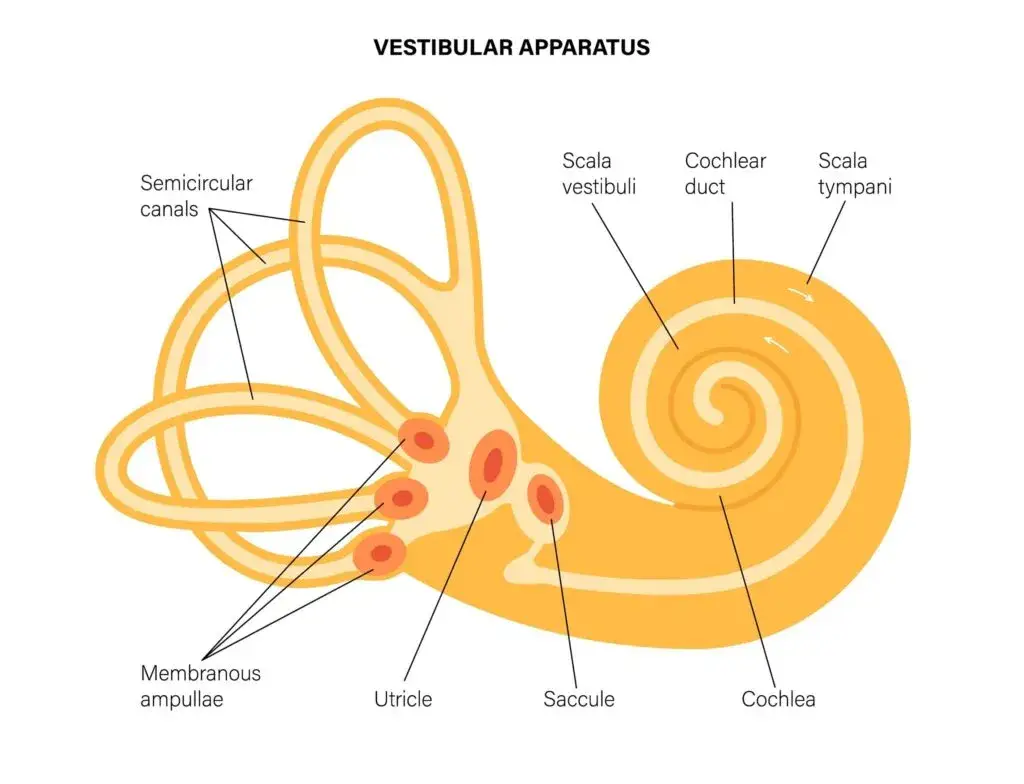
(How Storms Trigger Headaches—and How Upper Cervical Chiropractic Can Help You Find Lasting Relief in Sarasota, Bradenton, and Lakewood Ranch)
Why Does My Head Hurt from Barometric Pressure?When the forecast calls for storms in Sarasota or a tropical system rolls through the Gulf, many people feel the weather before they see it. The sky darkens, the wind shifts… and a familiar throb settles behind your eyes, across your forehead, or deep at the base of your skull. If you’ve ever said, “I can tell a storm’s coming—my head starts pounding,” you’re not imagining it. Barometric pressure changes are a real and well-documented trigger for many types of head pain, including tension headaches, “sinus” headaches, and migraines.
At Lavender Family Chiropractic, we specialize in upper cervical chiropractic—a precise, gentle way to correct misalignments at the very top of your neck (the atlas and axis). Over the years, we’ve seen a strong pattern: people with a sensitive upper neck and brainstem region are often the same people who get “weather headaches.” The good news? When we restore alignment and calm the nervous system, many of our patients notice that their storm-related headaches become less intense, less frequent, and sometimes fade altogether.
This guide explains why barometric pressure affects head pain, how the upper cervical spine fits into the picture, and what you can do—today—to start feeling better. If you’re searching for a “chiropractor Sarasota Florida,” “chiropractor near me,” “upper cervical chiropractor near me,” “Vertigo doctor near me,” or “Migraine doctor near me,” you’re in the right place.
Why Does My Head Hurt and What Is Barometric Pressure (and Why Does It Matter for Headaches)?
Barometric pressure—also called atmospheric pressure—is the force that the air above you exerts on your body. High-pressure systems (often associated with clear skies) and low-pressure systems (often associated with storms) create subtle but meaningful shifts in the pressure gradients around and within you. Your sinuses, middle ear, inner ear, blood vessels, cerebrospinal fluid (CSF), and nervous system all respond to these shifts.
When a storm front approaches, barometric pressure typically drops. That drop can create a mismatch between the pressure outside your body and the pressure in air-filled or fluid-filled spaces within your head. In people with underlying sensitivity, inflammation, or structural imbalance—especially in the upper cervical region—that mismatch can trigger pain, pressure, fullness, dizziness, brain fog, or a migraine cascade.
“Barometric Pressure Headaches”: What Do They Feel Like?
People use different phrases—“weather headaches,” “storm headaches,” “sinus pressure”—but the experience shares common threads:
- A dull, heavy, or throbbing pain across the cheeks, forehead, or behind the eyes
- Pressure behind the ears or at the base of the skull
- Sensitivity to light or sound (classic in migraines)
- A sense of fullness, popping, or fluid in the ears
- Dizziness, imbalance, or motion sensitivity—especially as storms come and go
- Fatigue, brain fog, irritability, or “I just don’t feel right”
Weather can trigger tension-type headaches, migraine, and sinus-like headaches (even when infection isn’t present). If you also have neck stiffness, recent posture changes, a history of whiplash, or jaw tension (TMJ), you’re more likely to feel the barometer’s swings.
The Weather–Headache Connection: How Pressure Changes Stress Your System
Sinuses, Eustachian Tube, and Middle Ear Pressure
Your sinuses and middle ear are air-filled spaces that try to equalize with the outside world. When pressure drops quickly, your Eustachian tube and sinus drainage must keep up. If they’re inflamed or sluggish, pressure differentials can cause facial pain, ear fullness, and headache. Many patients describe a “storm sinus” feeling even without a true infection.
Inner Ear, Balance, and Motion Sensitivity
The vestibular system (inner ear balance organs) is exquisitely sensitive to pressure changes. People with vestibular migraine, Meniere’s-like symptoms, or chronic motion sensitivity often report worsening dizziness when fronts move in. The inner ear interacts closely with neck proprioceptors (position sensors) and the brainstem—both influenced by upper cervical mechanics.
Trigeminal System and Migraine Cascade
The trigeminal nerve carries sensory input from your face, scalp, and sinuses into the trigeminocervical complex—a hub in the brainstem where neck and facial inputs converge. Rapid pressure changes can sensitize this system, especially if the upper neck is misaligned and constantly bombarding the area with irritated signals. That sensitization lowers your threshold for migraine and amplifies pain perception.
Vessels, CSF Dynamics, and Autonomic Tone
Weather shifts can subtly influence vascular tone (how open or constricted blood vessels are) and the movement of cerebrospinal fluid. If the joints and soft tissues at the cranio-cervical junction (where your skull meets your neck) are not moving properly, it may interfere with fluid drainage, increase local inflammation, and stress the autonomic nervous system. The result? Head pressure, heaviness, and that “barometric hangover” sensation.
Why the Upper Cervical Spine Matters So Much
The upper cervical spine (C1—atlas, and C2—axis) surrounds and protects the lowest part of your brainstem. It’s also packed with receptors that tell your brain where your head is in space. When the atlas or axis is even slightly misaligned, several things can happen:
- Abnormal input to the brainstem: Irritated joints and ligaments feed noisy signals into the trigeminocervical complex, priming headaches.
- Soft-tissue tension at the skull base: Tight suboccipital muscles can refer pain to the temples, eyes, and forehead.
- Altered fluid dynamics: Subtle misalignment may affect venous and lymphatic drainage, contributing to congestion and pressure.
- Postural chain effects: Forward head posture or a tilted atlas can ripple through the entire spine and jaw, increasing strain on the neck and head structures.
In short, when the weather shifts, a sensitive upper neck amplifies the body’s response—turning normal barometric changes into painful headaches.
How Misalignment in the Upper Cervical Region Triggers Weather Sensitivity
Think of your upper neck as the body’s control tower for head, neck, and balance information. If the control tower is off by a few degrees:
- Pain Threshold Drops: Constant irritation near the brainstem keeps the trigeminal system on edge.
- Drainage Can Stall: Subtle mechanical tension can interfere with smooth venous/lymphatic outflow, leaving you feeling congested and pressurized.
- Balance Gets Touchy: Mixed signals from neck proprioceptors and the inner ear increase motion sensitivity, especially during pressure swings.
- Autonomic “Fight-or-Flight” Ramps Up: Weather changes are just one more stressor, and your system may overreact with tightness, poor sleep, and headache.
Correcting that misalignment restores clearer signals, better mechanics, and calmer physiology—so the next storm front doesn’t hit as hard.
Signs You May Have an Upper Cervical Misalignment
- Recurrent “sinus” pressure without infection
- Headaches that start at the base of the skull or behind one eye
- Migraines triggered by weather, screens, or stress
- Ear fullness, popping, or sensitivity to altitude changes
- Dizziness, imbalance, or “boatiness” around storms
- Neck stiffness, poor posture, or a history of whiplash
- Jaw tension (TMJ), teeth clenching, or facial pain
- Fatigue and brain fog that flare with fronts
If several of these sound familiar, it’s worth getting a precise upper cervical evaluation—not just a quick, general “neck adjustment.”
Upper Cervical Chiropractic: A Precise, Gentle Answer
Upper cervical chiropractic focuses on the top of the spine, where a few millimeters matter. At Lavender Family Chiropractic in Sarasota (serving Bradenton, Lakewood Ranch, Parrish, Ellenton, Venice, Osprey, Punta Gorda, St. Petersburg, Siesta Key, Longboat Key, Lido Key, and Myakka City), we use state-of-the-art 3D CBCT imaging and functional nervous system scans to see what traditional exams often miss.
Our Approach at Lavender Family Chiropractic
- Comprehensive Consultation & Exam
We listen. We map your headache patterns to weather changes, sleep, stress, and posture. We test range of motion, balance, and neurologic function. - 3D CBCT Imaging of the Upper Cervical Region
Instead of guessing, we see your atlas and axis in three dimensions to identify the exact vector of misalignment and how it relates to your skull base. - Paraspinal Infrared Thermography (Tytron) & Functional Scans
Using Tytron thermography, we measure subtle thermal asymmetries along the spine—objective markers of nerve irritation and autonomic imbalance. These scans help us know when to adjust and when to let your body hold. - Gentle, Precise Corrections (No Popping, Twisting, or Cracking)
We deliver a custom adjustment based on your CBCT analysis—light, specific, and focused. Most patients are surprised by how gentle it feels. - Post-Adjustment Rest & Re-Check
After the correction, you’ll rest so the body can integrate the change. We re-scan to verify improved nerve function and confirm the adjustment is “holding.” - Progress Tracking & Storm-Season Coaching
We’ll teach you how to navigate weather swings: hydration, sleep, gentle mobility, and timing your routines around fronts. As alignment stabilizes, your sensitivity typically improves.
Patients frequently report that, as care progresses, storms stop dictating their days. Fewer headaches. Less heaviness. More freedom to plan beach days, work, and family activities—without checking the barometer first.
At-Home Strategies During Storm Season (That Pair Perfectly with Upper Cervical Care)
- Hydrate and Mineralize: Adequate water plus electrolytes can reduce vascular irritability.
- Steady Sleep: Aim for consistent bed/wake times; a calm nervous system is less reactive to weather.
- Magnesium Support: Talk with your provider about magnesium glycinate or citrate, commonly used for muscle and neurological support.
- Nasal Rinses & Steam: Keep sinus passages clear so pressure equalizes more easily.
- Ear Pressure Hygiene: Gentle swallowing, yawning, or Valsalva-like maneuvers (as advised) can help equalize ears—use caution if you have ear issues.
- Motion-Kind Movement: Slow neck mobility, deep breathing, and light walks support drainage and calm the autonomics.
- Heat or Cold (Your Preference): Some prefer a warm compress over sinuses; others like an ice pack at the suboccipitals.
- Track the Weather: A simple weather app can help you anticipate fronts and plan hydration, rest, and routines.
- Avoid Stacking Triggers: On storm days, limit screen glare, high histamine foods, alcohol, or intense workouts if those are personal triggers.
When to Seek Immediate Medical Care
While barometric pressure headaches are common, certain symptoms are red flags:
- A sudden, worst-ever headache
- Headache with fever, stiff neck, confusion, or fainting
- Headache after a head injury
- New neurological symptoms (weakness, numbness, slurred speech, double vision)
- A pattern that is rapidly worsening or unresponsive to sensible strategies
If any of these occur, seek urgent medical evaluation. Upper cervical chiropractic is a powerful complement to medical care—not a replacement for emergency assessment.
Real-World Stories from Our Community
- “The Storm Forecaster”: A Sarasota teacher could predict rain by the throbbing behind her right eye. CBCT revealed a right-sided atlas tilt; Tytron scans showed persistent asymmetry. After a tailored upper cervical correction and a few weeks of care, she noticed the first big front came and went with only mild pressure—no migraine. Months later, she told us, “Storms don’t run my schedule anymore.”
- “The Weekend Boater”: A Longboat Key dad loved fishing but dreaded choppy weather: barometric shifts plus wave motion triggered head and ear pressure. Post-correction, he handled a breezy weekend with no ear fullness and no headache—his first in years.
- “The Sinus Sufferer”: A Lakewood Ranch patient with perennial “sinus headaches” had normal ENT imaging but relentless storm pain. After upper cervical work and daily drainage habits, she reported that her spring season was the lightest on headaches she could remember.
(Experiences vary, but these stories capture a common arc: when the upper neck is stable, the whole system reacts more gracefully to weather.)
Top 15 FAQs About Barometric Pressure Headaches & Upper Cervical Care
1) Are barometric pressure headaches real, or is it in my head?
They’re real. Pressure changes can stress sinus, ear, vascular, and neural systems. If your upper cervical spine is irritated, you may feel those changes more intensely.
2) How do I know if my headaches are weather-related?
Track them. If pain clusters around fronts, humidity swings, or storm days, weather is likely a trigger. Many patients also notice neck tightness on those days.
3) What’s the difference between a sinus headache and a migraine?
Overlap is common: facial pressure can appear in both. Migraines often add light/sound sensitivity and nausea. Weather can trigger either. Upper cervical misalignment can amplify both patterns.
4) Can upper cervical chiropractic help if I also get dizzy around storms?
Yes. The brainstem and neck proprioceptors influence the vestibular system. Many patients with vestibular migraine, MdDS-like symptoms, or motion sensitivity improve as alignment stabilizes.
5) What makes your adjustments different?
We use 3D CBCT to map your unique misalignment and perform gentle, precise corrections—no popping, twisting, or cracking. Our Tytron scans provide objective before/after data.
6) How long before I notice changes?
Some feel relief after the first correction; others improve steadily over weeks as the nervous system calms and holds alignment. We’ll monitor your progress with regular re-checks.
7) Will I need lots of adjustments forever?
Our goal is stability, not constant adjusting. With upper cervical care, the best outcome is an adjustment that holds, requiring less frequent care over time.
8) Can weather headaches be completely eliminated?
Every case is different, but many patients see fewer and milder episodes. Even when a front triggers a headache, it often resolves faster with less medication.
9) Is this safe if I’ve had neck surgery or severe arthritis?
Yes—our methods are gentle and tailored. We’ll review your history and imaging to determine if upper cervical care is appropriate and how to proceed safely.
10) Do you work with my other providers?
Absolutely. We collaborate with primary care, neurology, ENT, and PT as needed. Patients with complex histories often benefit from a team approach.
11) What if I think my headaches are “just sinus”?
Great—let’s evaluate. We frequently help people whose “sinus headaches” are actually neck-driven or migraine-related. If ENT care is needed, we’ll guide you there as well.
12) Is there research behind upper cervical care and headaches?
There is growing literature supporting the role of cervical and brainstem mechanics in headache and migraine physiology. Our imaging-guided, gentle approach is designed to optimize that relationship.
13) Do you take insurance?
Our office is out of network with insurance. Many of our patients receive a superbill to submit to their insurance for reimbursement based on their coverage. We offer many different payment options as well as finance options.
14) What should I do on days when a storm is coming?
Hydrate, get to bed on time, avoid stacking triggers (screen glare, alcohol), use gentle mobility, and have your upper cervical check-ins scheduled during stormy seasons.
15) How do I get started?
Call us at (941) 243-3729 or visit www.chiropractorsarasotaflorida.com to schedule a 3D CBCT upper cervical evaluation.
Why Choose Lavender Family Chiropractic for Weather-Triggered Headaches
- Precision First: 3D CBCT imaging and Tytron thermography to pinpoint your exact atlas/axis pattern
- Gentle, Specific Care: No popping, twisting, or cracking—adjustments designed to hold
- Objective Tracking: Functional nervous system scans to measure progress, not guess
- Whole-Person Focus: Sleep, hydration, posture, and storm-day coaching built into your plan
- Experience with Complex Cases: Migraines, vestibular symptoms, TMJ, post-concussion, and POTS/dysautonomia are our daily work
- Local & Convenient: Serving Sarasota, Bradenton, Lakewood Ranch, Parrish, Ellenton, Venice, Osprey, Punta Gorda, St. Petersburg, Siesta Key, Longboat Key, Lido Key, and Myakka City
- Caring Team: Dr. Rusty Lavender, Dr. Jacob Temple, and Dr. Will Guzinski are committed to helping you get your life back—rain or shine
Address: 5899 Whitfield Ave Ste 107, Sarasota, FL 34243
Phone: (941) 243-3729
Website: www.chiropractorsarasotaflorida.com
Instagram: @lavenderfamilysrq • TikTok: @drrustylavender
What Your First Visit Looks Like
- Welcome & History: We’ll review your headache diary, weather triggers, and overall health.
- Functional Scans: Tytron paraspinal thermography to assess nerve function and autonomics.
- 3D CBCT Imaging: High-definition images to measure the exact misalignment vector.
- Personalized Plan: We’ll walk you through findings and map a gentle, step-by-step strategy.
- First Correction (If Appropriate): A precise adjustment customized to your measurements.
- Rest & Re-Scan: We verify that the correction is effective and give you simple at-home steps.
- Follow-Up Schedule: Designed to stabilize your alignment, reduce reactivity, and increase resilience through storm seasons.
The Bigger Picture: From Weather-Reactive to Weather-Resilient
You don’t have to arrange your life around the forecast. When the upper cervical spine is aligned and the nervous system is calm, the body can adapt to pressure changes the way it’s supposed to—quietly, in the background, while you live your life. Imagine checking the radar out of curiosity, not fear. Imagine enjoying a summer storm on the lanai without bracing for the inevitable headache.
That shift—from reactive to resilient—is exactly what we aim for.
Ready to Stop Letting the Barometer Run Your Day?
If storms bring headaches, heaviness, or dizziness, it’s time for a targeted upper cervical evaluation. The difference between a generalized neck adjustment and a CBCT-guided atlas correction can be the difference between short-term relief and lasting change.
Lavender Family Chiropractic in Sarasota Florida offers complimentary consultations to learn more about you. Click the link below!
https://intake.chirohd.com/new-patient-scheduling/724/lavender-family-chiropractic
Visit our Website!
To learn more about us go to http://www.chiropractorsarasotaflorida.com
We also service Bradenton, Parrish, Ellenton, Ruskin, Venice, Tampa, St. Pete, Osprey, Longboat, Lakewood Ranch, Myakka City.
If you are in Tampa, Fort Myers, or Salt Lake City, you can visit my other locations! NeckWise Upper Cervical. Visit, www.neckwise.com
If you are not local, visit www.uccnearme.com to find a doctor in your area.
Call (941) 243-3729 or visit www.chiropractorsarasotaflorida.com to schedule your consultation. If you’ve been searching for a “chiropractor near me,” “upper cervical chiropractor near me,” “Vertigo doctor near me,” or “Migraine doctor near me” in the Sarasota–Bradenton–Lakewood Ranch area, we’d be honored to help.
Lavender Family Chiropractic—Sarasota’s trusted home for upper cervical chiropractic care that’s gentle, precise, and designed to help you thrive in every season—even storm season.





